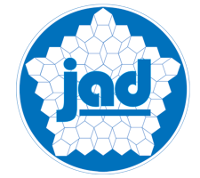Report On Touchstones Pilot Project 2002
The Touchstones curriculum served as source material for the project. Whilst Touchstones was designed to hone discussion skills among students, the project adapted the curriculum to alleviate anxieties among Deaf students about their proficiency in expressive and receptive English as well as sharpening and sensitising their listening, thinking and discussion skills. It attempted to incorporate and utilise Jamaica Sign Language as the principal mode of communication in the classroom, whilst encouraging a positive exposure towards reading and writing English.
Deaf Adults
Our core cadre of instructors was DCFs fluent in JSL and able to relay the story in an effective as well as appealing manner. The level of enthusiasm exhibited by the DCFs was good; it was positive to witness spontaneous discussions occurring among the DCFs about the stories. They shared ideas, referred to the text and sought out the larger meaning – morals – within. Nevertheless, there was little shift to active engagement with and critical approach to the material when they assumed instruction of the classes with the youth. The pedagogical process that the DCFs assumed and relied upon (identical to that which they were exposed to as students themselves – chalk and talk methodology) fails to include proactive questioning and reflection on the philosophical tenets. To address this weakness, I tried to stimulate and encourage the DCFs to connect the material to the immediate experiences of the students.
Course Content
We ploughed through Touchpebbles Book A and finished with Story #10. We were ambivalent about whether to introduce a new story weekly, as opposed to working with the same story repeatedly (albeit with different pedagogical approaches). In order to sustain novelty, interest and variety, the DCFs and I decided to maintain a flow of diverse stories. The DCFs experimented with the instructional methodology from class to class, communicating and incorporating what was successful. In sum, the students demonstrated a strong familiarity (recognition) with the stories presented over the term, although their ability to recall, correctly and in full, the content, was somewhat mediocre.
Comments on Language
A major challenge was determining an effective means of combating the deeply self-ingrained idea that the students have: “I can’t read.” Does one give stories to match their current reading ability (hence giving a sense of major accomplishment) or does one match the expected reading ability of the students (hence perhaps stimulating them to reach higher and further, but a risk of embarrassment or failure)? How does one improve their overall attitude towards themselves and their ability to decipher, or willingness to grapple with, the text?
There were several observations on the language proficiency of the students. Their skills and applications of the language were delayed more than I had anticipated. Generally, the students’ demonstrated production of the language – expressive capacity – was weak; many students produced a hybrid of English signs in a peculiar amalgamation of English and JSL structure and syntax. Students relied extensively on drama instead of language per se for their expressive and receptive communication. Because they utilised an incredible amount of dramatisation rather than incorporating signs into their communication efforts, it verified that the student have an inadequate foundation in JSL. They exhibited significant difficulty in comprehending pure JSL delivered by our most fluent adult signers. Consequently, there appears to be a significant socio-linguistic retardation among the students as evidenced by their limited modes of communication.
In their representations of the text, students tended to be quite imaginative and haphazard. The underlying question is: what is it that they were interpreting us to mean (or were asking of them)? Were they to mimic the story back to us, or were they to draw upon ideas presented and concoct their own story, or were they to do a combination of both tasks, or was it something entirely different? Whilst it was good to see their imaginative faculties in use, it raised questions about their ability to absorb, process and then explain the information given. Let alone the major question of whether students could engage with the material in a critical and sustained manner, interacting with the ‘morals’ present.
Preliminary Recommendations
Research indicates that the formative years for imprinting language syntax and structure on the brain is in early childhood. As our students lack the appropriate visual linguistic resources to draw upon in their homes, schools and communities, their language development is severely curtailed. The existing language models available to our students are insufficient, thereby adding to an already delayed development in communication skills and capacity. Because of the students’ demonstrated delayed acquisition of, and hence poor facility with, Jamaica Sign Language, it is imperative that the Early Childhood and Primary Level programmes offer immersion in a JSL-rich environment. It is impossible to introduce, in an effective and meaningful manner, a second language unless there is a solid knowledge of the first language. At present, our students have inadequate exposure to excellent JSL and poor instruction in English as shown by their capacity and use of pidgin communication methods. Consequently, their ability to receive and express academic and theoretical information as well as emotions and personal thoughts through genuine Jamaica Sign Language (and English) is severely compromised. Hence, the honing and stimulation of their intellect is impaired. Specific proposals:
- Expand the number of DCF and consolidate them onto one site: in order to provide appropriate early language immersion and stimulation necessary for the students.
- Solicit and sponsor major effort to research JSL. Adapt the findings to the Special Education teacher training programmes on the island to produce proficient signers.
- Instigate and support thorough training of Deaf adults in their efforts to become trained teachers.





